First female students of the founding universities of Aalto University
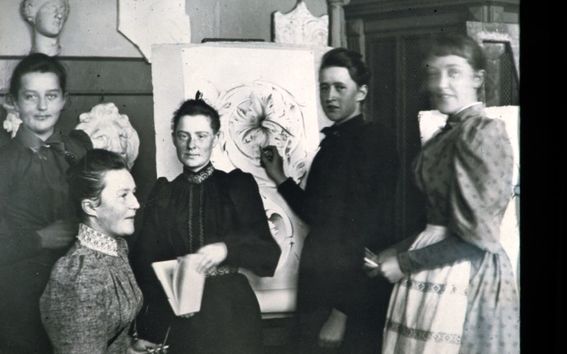
Both the Helsinki Manufacture and Handicraft School and the Craft School were founded to serve the needs of the gradually growing industry in the second half of the 19th century. While the Manufacture and Handicraft School largely served the technical design needs of industry, the goal of the Craft School and its European role models was to raise skilled and cultured craftsmen for the needs of factories and workshops and, on the other hand, to make the design of industrial products interesting to consumers.
Helsinki Manufacture and Handicraft School 1849
- Polytechnical School 1872
- Polytechnical Institute 1878
- Finnish University of Technology 1908
- University of Technology 1942
Craft School 1871
- Central School of Industrial Arts 1886
- Institute of Industrial Arts 1946
- University of Art and Design Helsinki 1973
School of Economics 1911
- Helsinki School of Economics 1974
Industrial arts provide working life also for women
Women studied at the Craft School right from the school's founding. Already in the 1880s, 71 of the school's 171 students were women, and in the 1890s the gender distribution was largely equal. Although at the beginning the students were mainly from the working class, soon after the school was founded, women from middle to upper classes also applied to become students, and the school became middle-class towards the end of the century.
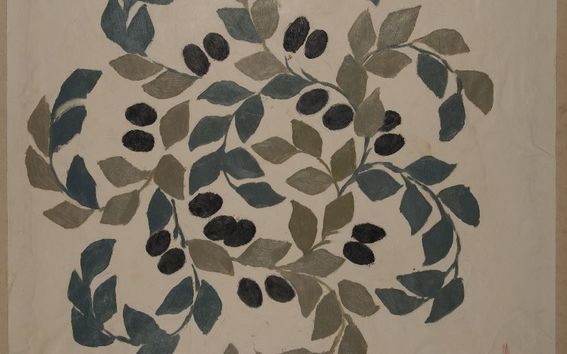
Industrial arts offered women a rare path to education and working life, which was otherwise almost non-existent in society at that time. In addition to craftsman professions, students graduated as craft and drawing teachers in craftsman schools. Back in the 19th century, a few students graduated as teachers each year, including women. Many women who graduated from the school also became artists, even though the school wasn't an actual art school.
The drawing teacher training for grammar schools did not start until 1915, and four women, Linnea Röman, Viivi von Schrowe, Tyyne Tappura and Viivia Veiste, graduated from the first course in 1917.
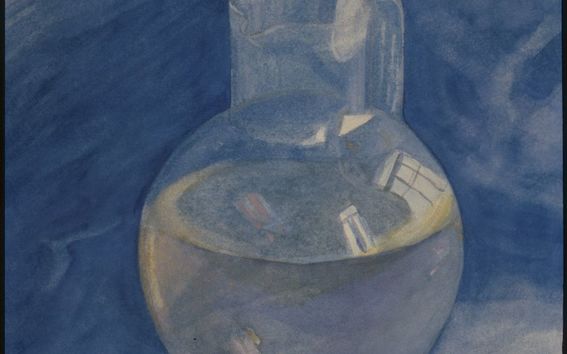
The Central School of Industrial Arts was also somewhat international during the period of autonomy. The first foreigners studied at the school already at the beginning of the 1890s, and by the 1910s, already five percent of the students were from other countries than the Grand Duchy of Finland. The subject has not been studied more extensively, but over the decades there were at least numerous Estonians among the students.
Estonian ceramist Juuli Suits studied at the Central School of Industrial Arts in 1907-1910. Some student works of Juuli Suits have been preserved at the Aalto University Archives.
All in all, a significant number of women have graduated from the field of industrial arts, who have had an impact on various aspects of Finnish society. At the Aalto University Archives, you can find the archives of several women who have made a significant career in their field, such as Kyllikki Salmenhaara, Maija Heikinheimo, Lisa Johansson-Pape, Maria Laukka, Helmiriitta Honkanen, Anja Danska. The works of individual women can also be found in abundance in other visual, object, textile and drawing collections.
The women's rocky path to technical education
In the Grand Duchy of Finland, the first women were able to study a matriculation examination only with special permission, and it was not until 1870 that the first woman was allowed to complete a matriculation degree. Since women generally lacked a high school diploma, there was no access to higher education, including the Helsinki Polytechnical Institute, even though the school did not yet have university status at the time. In general, women did not enter universities without a special permit until 1901.
Although from the 1880s onwards, women were enrolled in the Polytechnical Institute as extra students, they were mostly not mentioned in the school's student registers. The first women in the engineering field mainly studied architecture, e.g. Helene Schjerfbeck studied some courses at the Polytechnical. Women did not get equal status as students until 1896. Between 1887 and 1917, about 70 women studied at the school and 45 of them obtained a degree.
The first woman to graduate from the Polytechnical Institute was the architect Signe Hornborg (1862-1916) in 1890, who can be considered an international pioneer in her field. Only in North America had women graduated as architects before this. However, the pioneer status did not bring fame and glory, Hornborg often ended up designing without remuneration and focusing on social projects did not bring the deserved status. Among other early female architects, it is good to mention the extremely successful Wivi Lönn, who graduated in 1896 and was the first female architect in Finland to establish her own office.
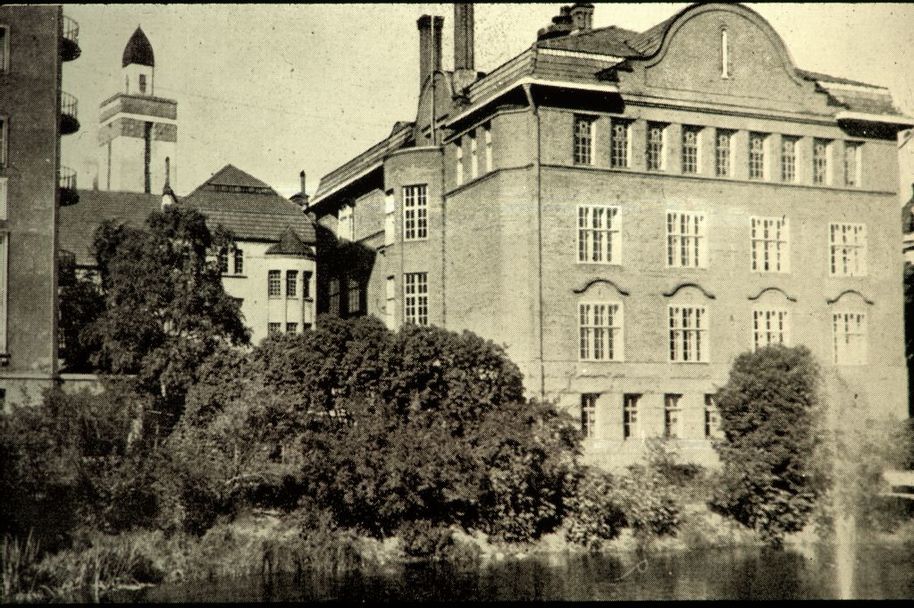
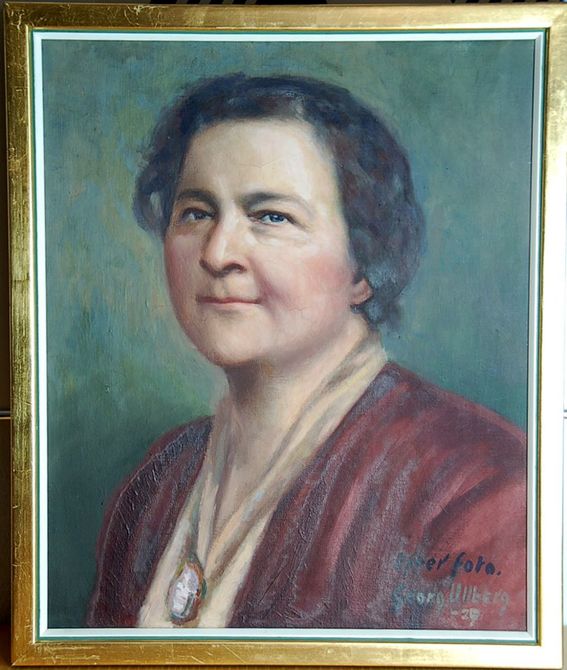
The first woman to graduate as an engineer was Jenny Markelin, who started her studies in 1900 and graduated in 1905 as a Master of Science in Technology in Road and Bridge Construction with excellent grades and a diploma. With her engineering degree, Markel aimed to become a occupational inspector, which position she ended up in in 1908 after being appointed assistant to the state's female occupational inspector Vera Hjelt, and in 1909 as a female assistant inspector in the occupational inspection districts of Vyborg and Lahti.
The occupational inspection was an important field in which the working conditions of those working in industrial occupations were monitored, i.e. it was an early work safety position. Vera Hjelt, who acted as Markelin's superior at the beginning of her career, herself had not been educated at the Polytechnic school, did urge all women to get educated and apply for working life, including technical fields, in her work “Women in Useful Occupations”, published in 1888. In her book, she describes the Polytechnic School as follows, "The purpose of the Helsinki Polytechnic Institute is to provide systematically organized teaching with scientific and practical education, if it is needed for technical and other professions of the same quality."
Many women who graduated from the Polytechnic School have created a significant career in their field after these first women architects and engineers. There are hardly any traces of early women in the field of technology left in the collections of Aalto University Archives besides the school’s registers, but in the middle of the 20th century the situation begins to change significantly. However, none of the private archives in the technical field are about a woman in the technical field.
The field of business studies open for women from the beginning
The School of Economics was only founded in 1911. Since the founding year, the proportion of women stayed steadily around 30% of students, in the founding year 31%, but the proportion rose little by little over the decades. After the beginning of the 20th century, women already had a clearer position in working life, and this was certainly also visible in the students of the School of Economics.
In addition to matriculation records, student registers and annual reports, the School of Economics has perhaps the least amount of archival material related to the students themselves. However, one of the few personal archives related to the school is the wonderful archive collection handed over to the Aalto University Archives by Ilta Lehtinen, who graduated as an economist in 1939.
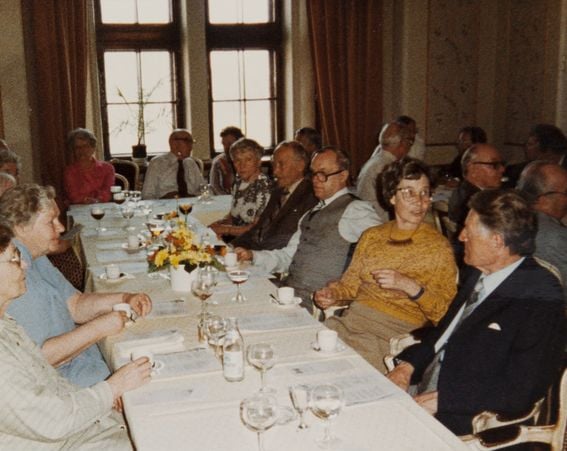
Ilta Lehtinen studied in 1937-1939, and in addition to lecture notes, her collection contains interesting material about student life in the late 1930s in the form of notes, pictures, objects and newspaper clippings. Lehtinen's collection also contains an interview in which she talks about student life in the 1930s. Lehtinen was actively involved in student life, she has e.g. prize for pistol shooting. The material also contains an article about the football match between the women of the University of Technology and the School of Economics, which was played to raise money for the upcoming Helsinki Olympics. It is not clear from the article whether Ilta participated in the game herself, but the "Ilmi the Polyteekki’s Cannon" obviously received the attention she deserved in the article - "The match only starts when Ilmi gets her pants on."
Text: Susanna Kokkinen
Archive material:
Aalto University Archives: student registers and student cards of the founding universities, as well as image and drawing collections; Ilta Lehtinen's personal archive.
The printed annual reports of Aalto University's founding universities can be found digitally in the Aaltodoc publication database https://aaltodoc.aalto.fi/communities/5c210349-f4d1-443b-88f6-5241ab8f7d3c
Literature:
Sotamaa, Yrjö (toim.), 1999, Arabia Maskerad – Taideteollisuuden muotoja ja murroksia
Kruskopf, Erik, 1989, Suomen Taideteollisuus – suomalaisen muotoilun vaiheita
Nykänen, Panu, 2007, Kortteli sataman laidalla : Suomen teknillinen korkeakoulu 1908-1941
Vuolle-Selki, Tuula (artikkeli Tekniikka & Talous 1.9.2023), Jenny Markelin on Suomen ensimmäinen naisinsinööri – Varhainen kuolema katkaisi työuran https://www.tekniikkatalous.fi/uutiset/jenny-markelin-oli-suomen-ensimmainen-naisinsinoori-varhainen-kuolema-katkaisi-tyouran/f56ad3e3-be80-490d-b8e9-d7e380467174
Vuolle-Selki, Tuula (artikkeli Tekniikka & Talous 13.11.2022), Suomalainen 1800-luvun arkkitehti teki historiaa ensimmäisenä Euroopassa, mutta työskenteli usein ilmaiseksi ja jäi tuntemattomaksi https://www.tekniikkatalous.fi/uutiset/suomalainen-1800-luvun-arkkitehti-teki-historiaa-ensimmaisena-euroopassa-mutta-tyoskenteli-usein-ilmaiseksi-ja-jai-tuntemattomaksi/4a9f2aa6-0ff2-4a70-8fc8-b96f7d003218
Vähäpesola, Johanna, 2009, Uhka miehisyydelle ja ammatille - Naiset tekniikan opiskelijoina ja asiantuntijoina Suomessa 1879–1939 (pro gradu, Tampereen yliopisto) https://trepo.tuni.fi/bitstream/handle/10024/80903/gradu03783.pdf?sequence=1
- Published:
- Updated: